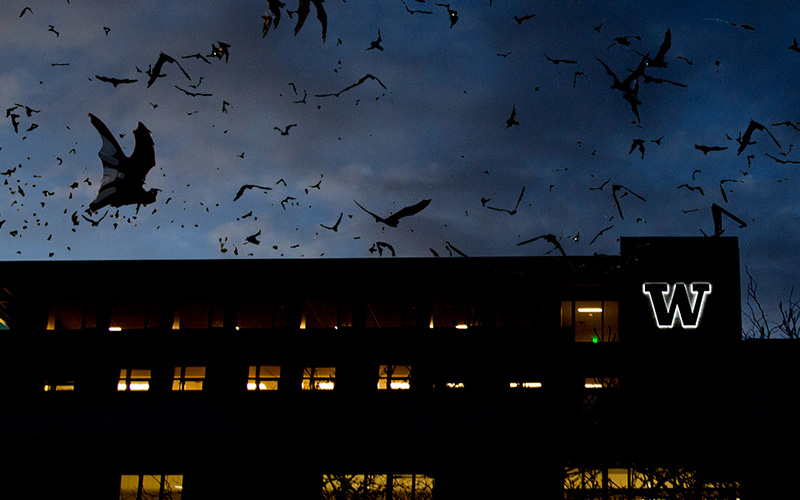
The Monstrous
Some monsters hide under beds or in sewer drains. Most, however, live inside us. Ingrid Walker and Dustin Annis talk about the role of the monstrous imagination in culture and politics.
This Section's arrow_downward Theme Info Is:
- Background Image: ""
- Theme: "light-theme"
- Header Style: "purple_dominant"
- Card Height Setting: "consistent_row_height"
- Section Parallax: ""
- Section Parallax Height: ""
Some monsters hide under beds. Others lurk in sewer drains. Most, however, live inside us. That’s the point Mary Shelley is articulating. Monsters, no matter how ghoulish or inhuman looking, are stand-ins for our darker impulses.
Monsters, or “the monstrous,” are more than just entertainment. If you look just beyond the gory surface, you will find a genre that is deep and often profound. UW Tacoma Associate Professor Ingrid Walker teaches a course called “Monstrous Imagination.” Walker and her students unmask the complex themes and meanings hidden in monster stories. “Monstrosity has been used as a trope for invasion, contamination, assimilation and a loss of identity,” said Walker. “What we see as different from us becomes pathologized as monstrous and inhuman.”
In many cases, the stories we are watching or reading are articulating some kind of social anxiety. Dustin Annis recently completed his undergraduate degree in American Studies. He took Walker’s course. “If you look at the way people lived when the Dracula legend was born there is definitely a bit of fear of the aristocracy,” he said. “Dracula is this affluent Middle European guy who drains the life force of the townsfolk.”
There is also a moral code built into many monster narratives. Think of all the slasher films that use violence as a way to punish sexual activity. There are other examples of how the genre tries to instill a sense of right and wrong. In her course Walker uses a video about Sasquatch to help drive the point home. “One of the characters says, ‘Look, be careful, don’t go beyond there because there’s a monster in the woods that’s going to get you,’” said Walker. “This becomes a way of controlling ourselves and controlling others.”
Walker and Annis came on Paw’d Defiance, the UW Tacoma podcast, recently to talk all things that go bump in the night. The conversation covers topics already touched on in this article but also gets into real-life monsters and how monsters have been used in American politics both past and present.
UW Tacoma Reads “The Raven”
This relatively short piece of narrative poetry — it’s only 100 lines — was first published in 1845. “The Raven” was the 19th century equivalent of a viral hit. There are stories that children would follow Poe around and flap their arms like wings until he turned and exclaimed “Nevermore.” The poem remains popular today. “The Raven” has been referenced in “The Simpsons” and there is even an NFL football team named after it. The fall, especially Halloween, felt like the perfect time to revisit this classic tale of loss, grief and descent into madness. A group of 18 UW Tacoma faculty, staff, and alumni came together to read the poem.
Recent news
Main Content
Gathering Strength
News Tags on this arrow_upward Story:
- None
Main Content
UW Tacoma Enrollment up 4% for Autumn 2024
News Tags on this arrow_upward Story:
- None
Main Content
Celebrating First Gen
News Tags on this arrow_upward Story:
- None



